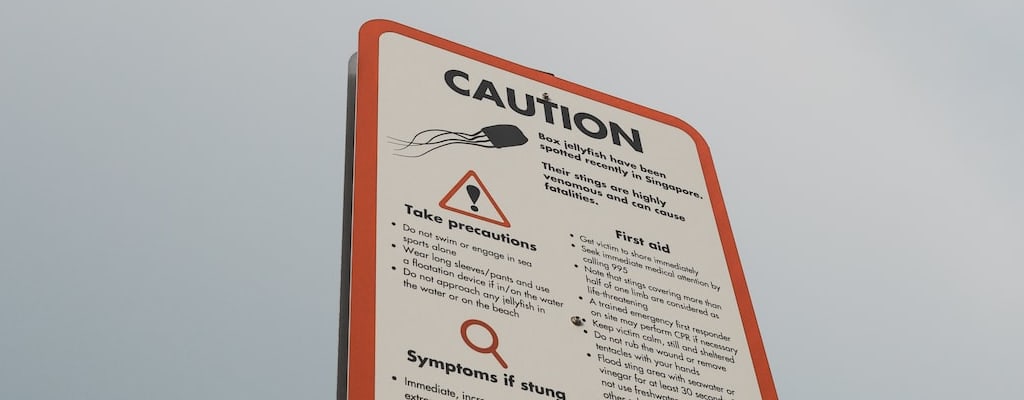watch it: Idiom Meaning and Origin
What does ‘watch it’ mean?
The idiom watch it is used to warn someone to be careful or cautious in a particular situation. It can also be used as a command to stop or consider one's actions, often when they are being reckless or impulsive.

Idiom Explorer
The idiom "watch this space" is used to tell someone to wait and see for further developments or announcements regarding a particular topic or situation.
"Watch over" means to protect, supervise, or care for someone or something, often with a sense of vigilance or responsibility.
The idiom "watch out" means to be careful or vigilant, usually in order to avoid danger or potential harm. It is often used as a warning to someone to pay attention to their surroundings and be cautious.
The idiom "watch one's step" means to be cautious or careful about one's actions or behavior in order to avoid making a mistake or causing harm.
The idiom "watch one's mouth" means to be careful about what one says, especially to avoid saying something offensive or disrespectful. It emphasizes the importance of choosing words wisely and being mindful of the impact they may have on others.
The idiom "watch one's language" means to be careful about the words one uses, especially in order to avoid saying something offensive or inappropriate.
The idiom "take check" means to carefully consider or think about something before making a decision or taking action.
The idiom "take a look" means to examine or observe something briefly or quickly.
Untold History Unveiled
Throughout the vast array of idioms found in the English language, "watch it" can be considered one of the more intriguing and versatile phrases. While its origins are not abundantly clear, the idiom serves as a warning or cautionary message, often pertaining to potential harm or consequences if one does not act with sufficient care or attention. This analysis will delve into the various meanings and contexts in which "watch it" can be used, shedding light on the multiple facets of this idiomatic expression.
At its core, "watch it" advises someone to be mindful or vigilant about a particular situation. It's a concise way to remind a person to exercise caution, as there may be potential risks or dangers ahead. The idiom's popularity lies in its ability to convey this message succinctly.
The phrase "watch it" can also convey a sense of urgency or impatience. In these instances, it directly commands immediate attention or action. There's no room for interpretation or delay.
While the exact origin of "watch it" remains uncertain, it is believed to have originated in the mid-20th century, potentially stemming from the notion of physically observing or guarding one's surroundings. Over time, this literal meaning has evolved into a figurative expression with a broader range of scenarios.
The versatility of "watch it" is exemplified by its usage in various contexts. In interpersonal relationships, it can be used as a cautionary phrase to prompt someone to be more mindful of their words or actions. It may serve as a gentle warning to prevent misunderstandings or potential conflicts.
In a more general sense, "watch it" reminds individuals to consider the consequences of their actions. By urging mindfulness and awareness, the phrase encourages responsible behavior and decision-making.
It is important to note that "watch it" is predominantly used in informal or colloquial settings. Its usage may vary across different regions or social groups, but its core meaning remains consistent. Like other idiomatic expressions, the interpretations of "watch it" rely heavily on context and the relationship between the speaker and listener.
Now, let's explore how "watch it" is related to other idioms:
"watch out" is a similar idiom that shares the same cautionary nature. It warns someone to be careful and alert, as there may be potential danger or trouble ahead. The distinction between "watch it" and "watch out" lies in the tone; "watch out" carries a stronger sense of urgency.
"keep watch" is another related idiom that emphasizes the act of vigilance or observation. It suggests actively monitoring or guarding a situation or area. While "watch it" focuses on caution and potential harm, "keep watch" highlights the act of attentively observing.
Similarly, "look out" conveys a warning or cautionary message. It prompts someone to be alert and aware of their surroundings. The phrase implies an immediate need for attention and vigilance, similar to the urgency conveyed by "watch it."
"watch one's step" serves as a more specific cautionary idiom. It advises someone to be careful and attentive to their actions, especially in situations where there may be hidden dangers or risks. The phrase emphasizes the need for mindfulness and awareness of potential hazards.
The idiom "watch it" encompasses a nuanced range of meanings and applications. Its origins may be shrouded in uncertainty, but its impact in everyday language is undeniable. Whether serving as a cautionary warning or an urgent command, "watch it" holds a unique position in the vast tapestry of English idioms. As our understanding of language and communication evolves, the possibilities for this idiom's usage may continue to expand, highlighting the timeless relevance of this age-old phrase.
Example usage
Here are three examples of how the idiom "watch it" can be used in a sentence:
- "He almost bumped into me, but I warned him to watch it."
- "Watch it, or you might trip over that bag."
- "I told him to watch it with his comments, as they could be offensive."
More "Caution" idioms



